Kia Stonic VS Kia Niro – Specs, Efficiency & Price Comparison
Which model is the better choice – the Kia Stonic or the Kia Niro? We compare performance (100 HP vs 171 HP), boot capacity (352 L vs 451 L), efficiency (5.50 L vs 0.80 L), and of course, the price (19400 £ vs 28300 £).
Find out now which car fits your needs better!
The Kia Stonic (SUV) is powered by a Petrol or Petrol MHEV engine and comes with a Manuel or Automatic transmission. In comparison, the Kia Niro (SUV) features a Full Hybrid or Plugin Hybrid engine and a Automatic gearbox.
When it comes to boot capacity, the Kia Stonic offers 352 L, while the Kia Niro provides 451 L – depending on what matters most to you. If you’re looking for more power, you’ll need to decide whether the 100 HP of the Kia Stonic or the 171 HP of the Kia Niro suits your needs better.
There are also differences in efficiency: 5.50 L vs 0.80 L. In terms of price, the Kia Stonic starts at 19400 £, while the Kia Niro is available from 28300 £.
Compare all the key specs now and find out which model fits your lifestyle best!
In the battle of compact crossovers, the Kia Niro and Kia Stonic each bring their own unique strengths to the table. The Niro impresses with its hybrid efficiency and spacious interior, making it an ideal choice for eco-conscious drivers. Meanwhile, the Stonic stands out with its sporty design and agile handling, appealing to those seeking a more engaging driving experience.
Kia Stonic
The Kia Stonic is a compact crossover that seamlessly blends bold design with practical functionality. Its distinctive, eye-catching exterior is complemented by a well-crafted interior offering a comfortable ride and intuitive technology for today's drivers. The Stonic is perfect for urban environments, providing agility and efficiency without compromising on style or performance.
details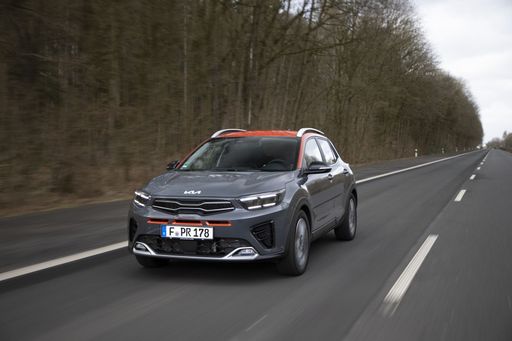 @ press.kia.com
@ press.kia.com
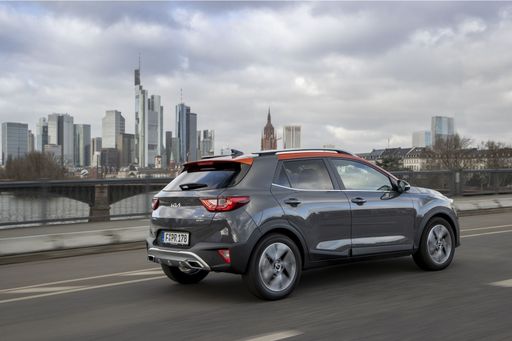 @ press.kia.com
@ press.kia.com
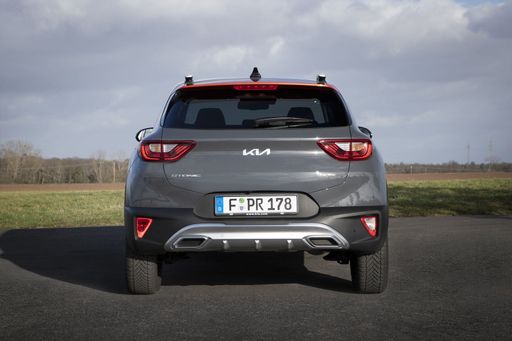 @ press.kia.com
@ press.kia.com
 @ press.kia.com
@ press.kia.com
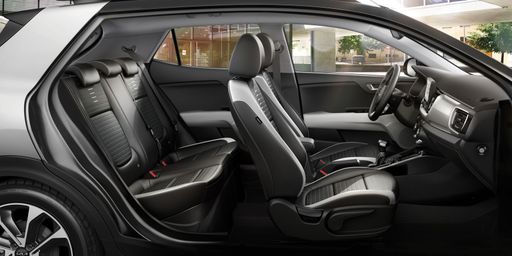 @ press.kia.com
@ press.kia.com
Kia Niro
The Kia Niro presents itself as a versatile and eco-friendly SUV, blending a stylish design with advanced hybrid technology. Its spacious interior offers comfort and practicality, making it ideal for both city driving and longer journeys. With a focus on efficiency and sustainability, the Niro is a compelling choice for environmentally conscious drivers.
details @ press.kia.com
@ press.kia.com
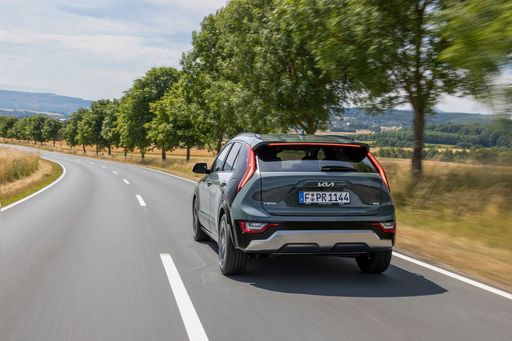 @ press.kia.com
@ press.kia.com
 @ press.kia.com
@ press.kia.com
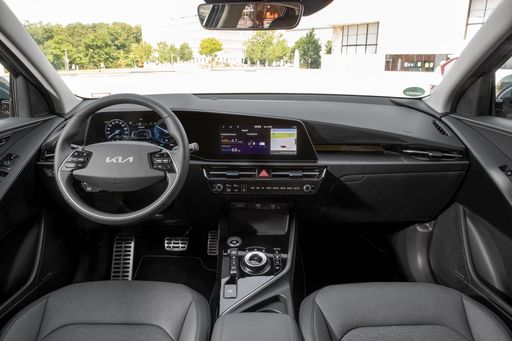 @ press.kia.com
@ press.kia.com
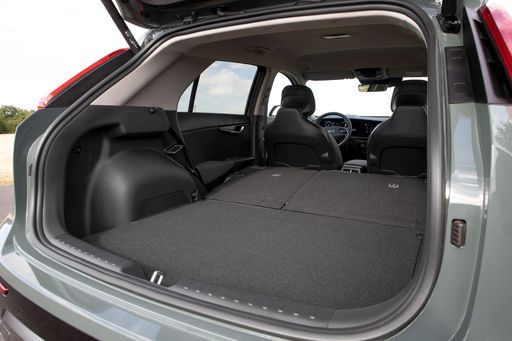 @ press.kia.com
@ press.kia.com
Kia Niro vs. Kia Stonic: A Comprehensive Comparison
In the crowded landscape of compact SUVs, the Kia Niro and Kia Stonic stand out as compelling options for consumers seeking versatility, efficiency, and innovative features. Both vehicles showcase Kia’s commitment to quality and technology, yet they cater to slightly different audiences. This article dives into a head-to-head comparison, highlighting the technical aspects and innovations that define each model.
Performance and Powertrain
The Kia Niro is available in full hybrid and plug-in hybrid variants, offering power outputs of 129 HP and 171 HP, respectively. Its engines are designed for efficiency, with a fuel consumption of just 4.4 L/100 km, making it an excellent choice for eco-conscious drivers. The electric range on the plug-in hybrid reaches up to 65 km, supported by an 11.1 kWh battery capacity.
Conversely, the Kia Stonic presents a lineup of petrol and mild hybrid petrol engines, with power outputs of 100 HP and 79 HP. With a maximum fuel consumption ranging from 5.5 L/100 km to 5.8 L/100 km, the Stonic is a reliable performer but falls slightly behind the Niro in terms of fuel efficiency. The Stonic's manual and automatic transmission options cater to diverse driver preferences, while the acceleration from 0-100 km/h varies from 11.3 seconds to 14.2 seconds, depending on the engine choice.
Dimensions and Cargo Space
When it comes to size, the Kia Niro measures 4,420 mm in length, 1,825 mm in width, and stands at a height of 1,545 mm. With a trunk capacity of 451 liters, it provides ample space for luggage and groceries, making it a practical choice for families.
The Stonic, slightly smaller at 4,140 mm long and 1,760 mm wide, has a trunk capacity of 352 liters. Although it may offer less cargo room than the Niro, its compact dimensions enhance urban maneuverability, making it ideal for city dwellers.
Interior Comfort and Technology
Both the Niro and Stonic prioritize driver and passenger comfort with high-quality interiors, but the Niro elevates this experience with advanced technology. The Niro boasts a modern digital cockpit with an intuitive infotainment system that includes smartphone integration and a range of driver-assist features.
The Stonic, while not as tech-rich, still offers plenty of modern amenities, such as a user-friendly touchscreen and optional connectivity features. The focus on simplicity and functionality resonates with younger buyers seeking a stylish yet practical vehicle.
Sustainability and Efficiency
The environmental impact of vehicles is an increasingly critical consideration for consumers. The Kia Niro excels in this area with its hybrid options, reducing CO2 emissions significantly to as low as 19 g/km for the plug-in hybrid variant. In comparison, the Stonic's petrol engines produce a higher range of CO2 emissions, peaking at 132 g/km, which may not appeal as much to eco-conscious drivers.
Conclusion: Which One Should You Choose?
Choosing between the Kia Niro and Kia Stonic ultimately depends on individual needs and preferences. If efficiency and sustainability are your top priorities, the Niro’s hybrid technology makes it a standout choice. However, if you seek a stylish and compact SUV suitable for city driving, the Stonic offers a charismatic package with an engaging driving experience.
In an evolving automotive landscape, both Kia models shine with their distinct advantages, appealing to a diverse spectrum of drivers. Whichever you choose, quality and innovation are guaranteed in these exceptional vehicles.

|

|
|
|
|
Costs and Consumption |
|
|---|---|
|
Price
19400 - 25600 £
|
Price
28300 - 37800 £
|
|
Consumption L/100km
5.5 - 5.7 L
|
Consumption L/100km
0.8 - 4.7 L
|
|
Consumption kWh/100km
-
|
Consumption kWh/100km
-
|
|
Electric Range
-
|
Electric Range
59 - 65 km
|
|
Battery Capacity
-
|
Battery Capacity
1.3 - 11.1 kWh
|
|
co2
125 - 129 g/km
|
co2
19 - 107 g/km
|
|
Fuel tank capacity
45 L
|
Fuel tank capacity
37 - 42 L
|
Dimensions and Body |
|
|---|---|
|
Body Type
SUV
|
Body Type
SUV
|
|
Seats
5
|
Seats
5
|
|
Doors
5
|
Doors
5
|
|
Curb weight
1195 - 1260 kg
|
Curb weight
1474 - 1594 kg
|
|
Trunk capacity
352 L
|
Trunk capacity
348 - 451 L
|
|
Length
4140 mm
|
Length
4420 mm
|
|
Width
1760 mm
|
Width
1825 mm
|
|
Height
1505 mm
|
Height
1545 mm
|
|
Payload
450 - 455 kg
|
Payload
466 kg
|
Engine and Performance |
|
|---|---|
|
Engine Type
Petrol, Petrol MHEV
|
Engine Type
Full Hybrid, Plugin Hybrid
|
|
Transmission
Manuel, Automatic
|
Transmission
Automatic
|
|
Transmission Detail
Schaltgetriebe, Automat. Schaltgetriebe (Doppelkupplung)
|
Transmission Detail
Automat. Schaltgetriebe (Doppelkupplung)
|
|
Drive Type
Front-Wheel Drive
|
Drive Type
Front-Wheel Drive
|
|
Power HP
100 HP
|
Power HP
129 - 171 HP
|
|
Acceleration 0-100km/h
11.3 - 12.4 s
|
Acceleration 0-100km/h
10.4 - 11.3 s
|
|
Max Speed
176 - 179 km/h
|
Max Speed
160 - 161 km/h
|
|
Torque
172 - 200 Nm
|
Torque
265 Nm
|
|
Number of Cylinders
3
|
Number of Cylinders
4
|
|
Power kW
74 kW
|
Power kW
95 - 126 kW
|
|
Engine capacity
998 cm3
|
Engine capacity
1580 cm3
|
General |
|
|---|---|
|
Model Year
2024 - 2025
|
Model Year
2024
|
|
CO2 Efficiency Class
D
|
CO2 Efficiency Class
C, B
|
|
Brand
Kia
|
Brand
Kia
|
Kia Stonic
A Versatile Compact SUV: Introducing the Kia Stonic
The Kia Stonic stands out in the ever-crowded market of compact SUVs, offering a blend of practicality and style underpinned by advanced technology. With its robust build and dynamic aesthetics, the Stonic is designed to appeal to those seeking versatility without compromising on performance and comfort. Let's delve into the technical details and innovations that make the Kia Stonic a compelling choice.
Powertrain Options: From Traditional to Mild-Hybrid
The Kia Stonic features a range of engine choices to cater to diverse consumer needs. The traditional petrol engines are available alongside modern mild-hybrid variants, offering both manual and automatic transmission choices. This flexibility is further bolstered by its front-wheel drive system, delivering a smooth and controlled driving experience. The power output ranges from 79 to 100 PS, with fuel efficiency figures varying between 5.5 to 5.8 litres per 100 km, making it a cost-effective option for urban and suburban driving.
Performance Specs: Balancing Power and Efficiency
The Stonic's performance is defined by its agile handling and responsive power delivery. Its acceleration can take you from 0 to 100 km/h in approximately 11.3 to 14.2 seconds, with a top speed ranging between 158 and 179 km/h. The vehicle's torque is rated between 113 to 200 Nm, delivered effectively across its 3 to 4 cylinder configurations. The Stonic shines with its balance of performance and efficiency, appealing to eco-conscious drivers with its CO2 emissions rated between 125 to 132 g/km.
Innovative Design: Exterior and Interior
Measuring 4140 mm in length, 1760 mm in width, and 1505 mm in height, the Stonic provides a compact yet spacious interior. The model accommodates five passengers comfortably, with ample cargo space of 352 litres, ensuring practicality for everyday use. The exterior design reflects Kia's commitment to a sporty and sleek aesthetic, while the interior is equipped with user-friendly technology aimed at enhancing driver convenience and comfort.
Price and Value: An Attractive Offering
The Kia Stonic is priced between €22,490 and €29,680, depending on the chosen model and specifications. This positions it competitively within the compact SUV segment, offering high value through its quality build and suite of standard features. Monthly costs are manageable, ranging from €826 to €915, with a cost per kilometre between 33 to 36.6 cents, making the Stonic an economical choice for sustained ownership.
Conclusion: A Smart Choice for the Modern Driver
With its range of engine options, innovative design, and practical performance specifications, the Kia Stonic is well-suited for the modern driver seeking an efficient, stylish, and versatile vehicle. Its competitive pricing and exemplary fuel economy further contribute to its appeal, marking it as a standout choice in the compact SUV market.
Kia Niro
The Evolution of the Kia Niro: A Glimpse into the Future
The Kia Niro has become a symbol of innovation in the hybrid and electric vehicle market. This compact SUV offers a unique blend of efficiency, performance, and style, appealing to a wide range of drivers. Kia Niro's latest model lineup showcases different powertrains, offering consumers choices between full hybrid, plug-in hybrid, and full electric options. These advancements represent Kia's commitment to sustainable mobility and cutting-edge technology.
Performance and Efficiency: Behind the Wheel of the Kia Niro
The performance range of the Kia Niro is impressive, with power outputs ranging from 129 PS in the full hybrid variant to 204 PS in the completely electric version. This ensures that there’s a Niro to meet diverse driving needs and preferences. The acceleration from 0-100 km/h spans between 7.8 to 11.3 seconds across different models, showcasing a balance between efficiency and responsiveness.
Fuel and energy consumption figures are equally commendable. With the hybrid models consuming between 0.8 to 4.4 litres per 100 km and the electric model utilising 16.2 kWh per 100 km, the Kia Niro caters to eco-conscious consumers. Notably, the plug-in hybrid version offers a remarkable electric range of up to 65 km, while the fully electric model boasts an impressive range of 460 km on a single charge.
Innovative Features for Today’s Driver
Kia has equipped the Niro with state-of-the-art features aimed at enhancing the driving experience. The latest models come with advanced driver assistance systems, ensuring safety and convenience. These include lane-keeping assist, adaptive cruise control, and collision avoidance technologies that set a high standard in the compact SUV class.
The Niro also benefits from a sleek infotainment system featuring a high-resolution display, offering seamless connectivity with features like Apple CarPlay and Android Auto. This keeps drivers connected while minimising distractions, creating an optimal driving environment.
Design and Practicality: A Perfect Balance
The Kia Niro stands out with its aerodynamic design, which is both aesthetically pleasing and practical. The dimensions of the vehicle – 4420 mm in length, 1825 mm in width, and a height ranging from 1545 to 1570 mm – provide ample space for passengers and cargo. The boot capacity ranges from 348 to 475 litres, catering to those who require versatility for their lifestyle or family needs.
The Niro’s cabin is crafted with a focus on comfort and usability, incorporating high-quality materials and an intelligent layout that complements its sophisticated exterior.
Sustainability and Cost Efficiency
The Kia Niro reflects Kia's dedication to improving environmental performance. The CO2 emissions spectrum, ranging from 0 to 100 g/km depending on the powertrain, highlights the vehicle's eco-friendly credentials. For those particularly conscious of their environmental footprint, the electric and plug-in hybrid models offer substantial reductions in emissions.
In terms of cost, the Niro offers competitive pricing from €32,790 to €47,590, and operational costs ranging from €928 to €1,101 per month. The Niro also maintains a reasonable cost per kilometre, between 37.1 to 44.1 cents, making it an economically sound choice in the long run.
Conclusion: The Future is Bright for Kia Niro
The Kia Niro stands as a testament to Kia’s innovative spirit and commitment to providing eco-friendly and technologically advanced vehicles. Its blend of performance, efficiency, and innovative features make it a compelling option for those seeking a future-focused SUV. As Kia continues to evolve, the Niro remains a leading example of how the brand is shaping the future of driving.
The prices and data displayed are estimates based on German list prices and may vary by country. This information is not legally binding.
